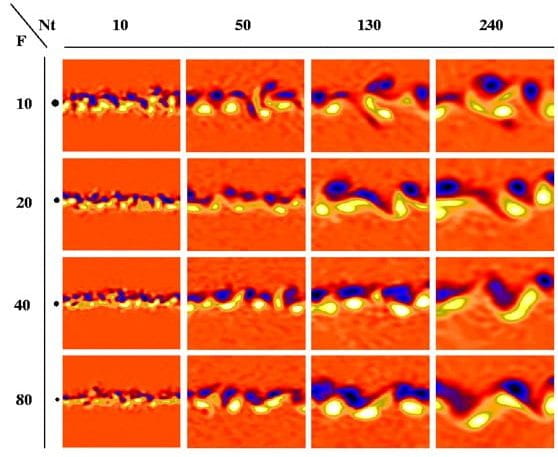
In the Stratified Fluids Lab we work on how complex, turbulent motions evolve in the presence of variations in background density. In the Troposphere (the atmospheric layer closest to the earth’s surface) and in the ocean thermocline (a region that covers depths from 50 m — 500 m), there are variations in density that can be modelled as linear with depth, or height, with lower density fluid overlaying heavier fluid. Consequently, whenever a fluid parcel is displaced vertically from its equilibrium position, it feels a restoring force that bounces it back. Now wavy solutions describing this kind of motion are added to the already beautiful and amazing range of fluid dynamics that we learn about in homogeneous fluids.
The effects are profound, and turbulence evolving in such density-stratified flows is qualitatively and quantitatively different. Particularly intriguing is the frequent emergence of long-lived coherent patterns from initially turbulent conditions. By now, we have all seen satellite images of island and headland wakes when conditions conspire to make them visible in low cloud cover. Since this is a quite general phenomenon, we may perhaps best imagine our fluid worlds (oceans and atmospheres) as being everywhere filled with many coherent structures and patterns, at many different levels, and with a large range of length and velocity scales. Large, slowly moving ocean eddies share features with aircraft and storm-induced flows in the atmosphere.
We would like to understand these flows, and in the [Research] page, we outline some of the basic methods and results accumulated thus far.
- What conditions are necessary for the formation of persistent, post-turbulent flows in the atmosphere and ocean?
- What conditions are necessary for the generation of pattern, or information, in these flows?
- Are the conditions above the same?
- What — if anything — is special about a self-propelled wake? Are there criteria for propulsive efficiency that relate to detectability?
These questions and many more keep us enthused and inquisitive. Perhaps you can think of questions of your own when you navigate around.
GS